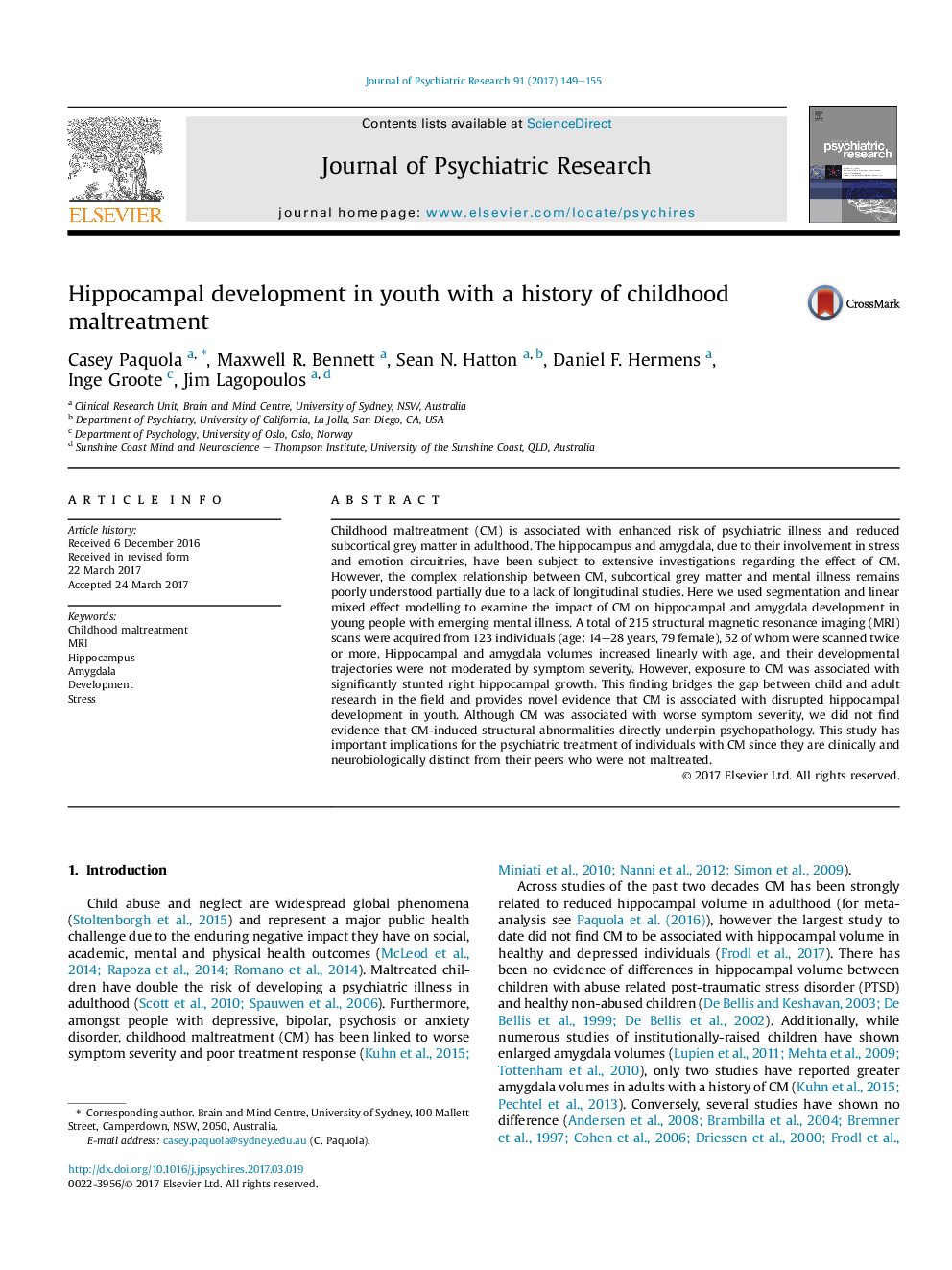| Article ID | Journal | Published Year | Pages | File Type |
|---|---|---|---|---|
| 4932077 | Journal of Psychiatric Research | 2017 | 7 Pages |
Abstract
Childhood maltreatment (CM) is associated with enhanced risk of psychiatric illness and reduced subcortical grey matter in adulthood. The hippocampus and amygdala, due to their involvement in stress and emotion circuitries, have been subject to extensive investigations regarding the effect of CM. However, the complex relationship between CM, subcortical grey matter and mental illness remains poorly understood partially due to a lack of longitudinal studies. Here we used segmentation and linear mixed effect modelling to examine the impact of CM on hippocampal and amygdala development in young people with emerging mental illness. A total of 215 structural magnetic resonance imaging (MRI) scans were acquired from 123 individuals (age: 14-28 years, 79 female), 52 of whom were scanned twice or more. Hippocampal and amygdala volumes increased linearly with age, and their developmental trajectories were not moderated by symptom severity. However, exposure to CM was associated with significantly stunted right hippocampal growth. This finding bridges the gap between child and adult research in the field and provides novel evidence that CM is associated with disrupted hippocampal development in youth. Although CM was associated with worse symptom severity, we did not find evidence that CM-induced structural abnormalities directly underpin psychopathology. This study has important implications for the psychiatric treatment of individuals with CM since they are clinically and neurobiologically distinct from their peers who were not maltreated.
Related Topics
Life Sciences
Neuroscience
Biological Psychiatry
Authors
Casey Paquola, Maxwell R. Bennett, Sean N. Hatton, Daniel F. Hermens, Inge Groote, Jim Lagopoulos,
